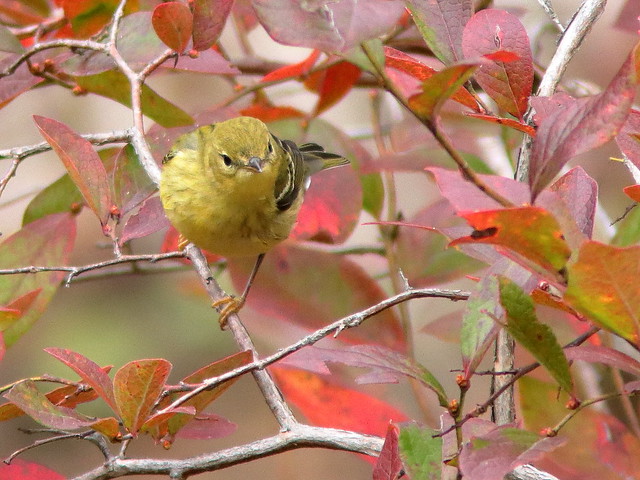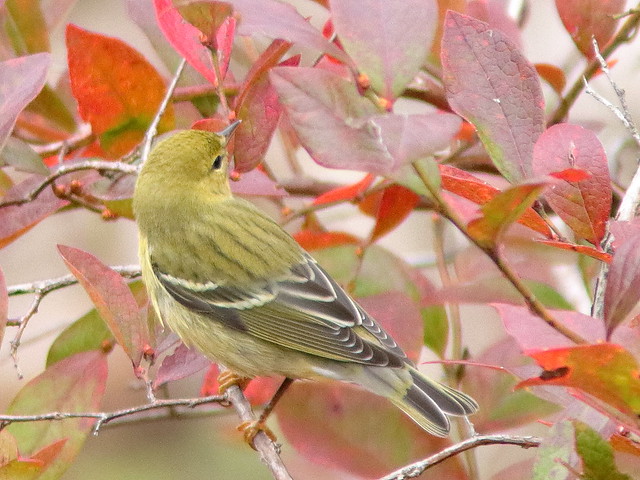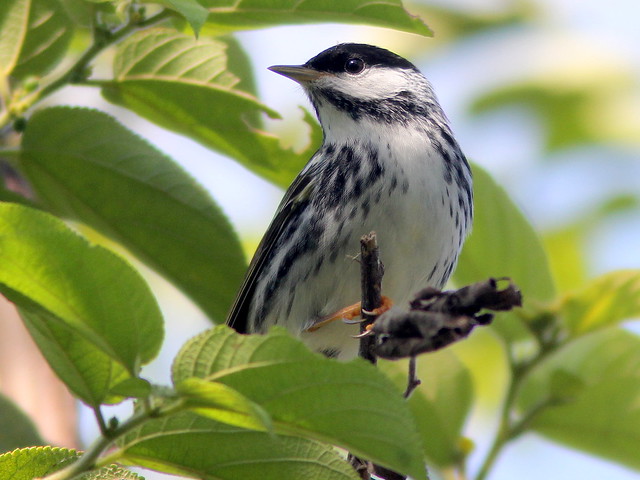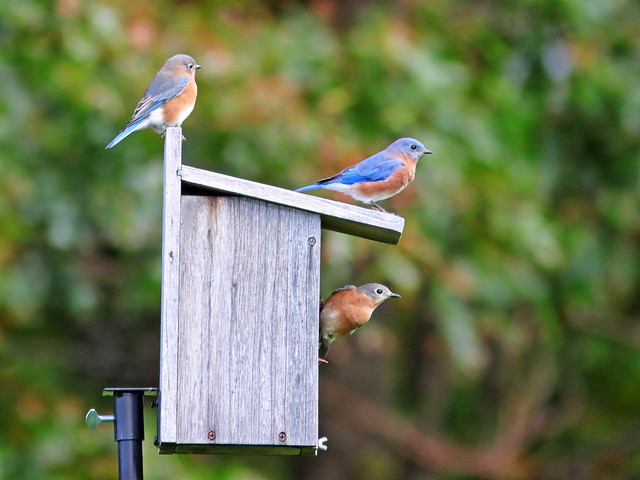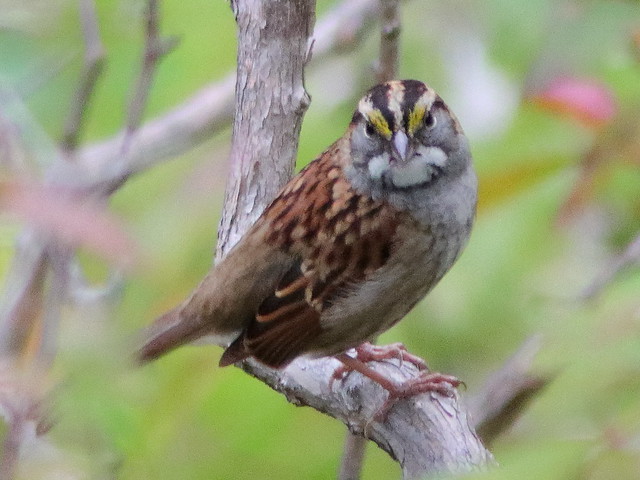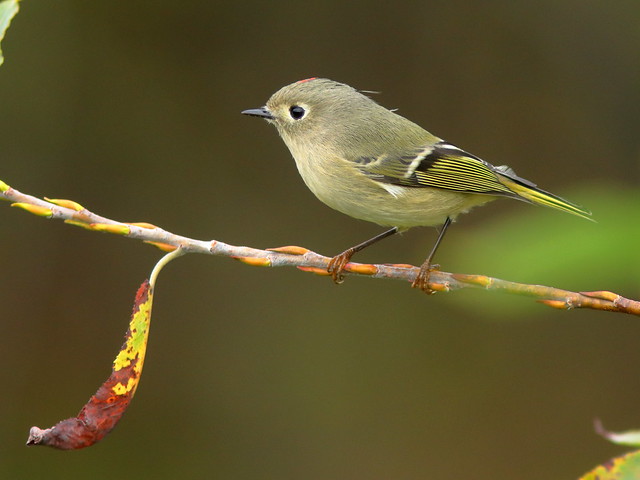We had a few clear days among the rainy, windy and even cold weather the past two weeks. My walks in the back yard were often uncomfortably chilly. Birds, if seen were wind-blown and quickly disappeared into cover. One morning the skies briefly cleared, the wind died down and I was suddenly rewarded, sighting 22 bird species during a 90 minute watch.
A few Yellow-rumped Warblers may remain here all winter and are usually encountered singly, but they showed up in a flock of four or more. One posed out in the open:
A real surprise was the appearance of a Blackpoll Warbler. This species breeds in boreal forests in far northern Canada and most migrate through in September. This was the only October sighting in our Town and latest in the County. I caught these images by pure luck as I noted unidentified bird activity among the leaves. Sometimes I am conflicted as to whether to reach for my binoculars or the camera, so I selected the camera and recorded its appearance for a second or two before it disappeared.
The foliage was in shadow, so my photos were a bit overexposed as I did not have time to decrease the exposure compensation, but I loved the soft color tones of leaves and feathers:
A male Red-bellied Woodpecker was calling excitedly from the top of a maple tree. I did not know what had attracted his attention:
Watching the feeders through the window, I captured images of a Blue Jay...
...and a White-throated Sparrow which had recently arrived from the north:
Seen from the back porthole window 80 feet (24 M) away, an Eastern Bluebird braved the drizzle, with the fall foliage as a backdrop:
The leaf- and acorn-strewn side lawn is deliberately left untended. Four Wild Turkeys have become regular visitors. Visibility of this area from our windows is limited, but here are a couple of rainy-day captures:
A Red Fox looked up at me from the top of the brush pile in the clear-cut before running off:
A misty morning on October 19:
Autumn foliage has reached its peak. Orange predominates. Here the cloud deck has lifted to provide a view of Hartford, 11 miles to our northwest:
A breeze distorted the reflections on the lake:
On a personal note, this week marks two years since I underwent a right hemicolectomy and liver resection for stage 4 colon cancer. It recurred in my liver and right lung and progressed despite a year of chemotherapy. I reacted badly to the platinum drug which was added to my regimen, and also was hospitalized for sepsis in April. After my May infusion I decided, after deep discussion with MaryLou and in consultation with other family members and my excellent Oncologist, to discontinue chemotherapy in favor of improved quality of life and recognition that this condition is incurable. The 2-year survival rate after surgery for cancer of the cecum is only about 15%. So far, I have been doing quite well, although there are limitations on my mobility and stamina. As long as I continue to look forward to my window views, back yard forays and interaction with my wonderful extended family, so many friends and online contacts, I will try to keep to my schedule of weekly blog posts. I thank you all for your prayers and expressions of love and concern.
This week's header: Mid-October misty morning--
= = = = = = = = = = = = = = = =
My Corner of the World
________________________________________________
Please visit the links to all these posts to see some excellent photos on display
________________________________________________



